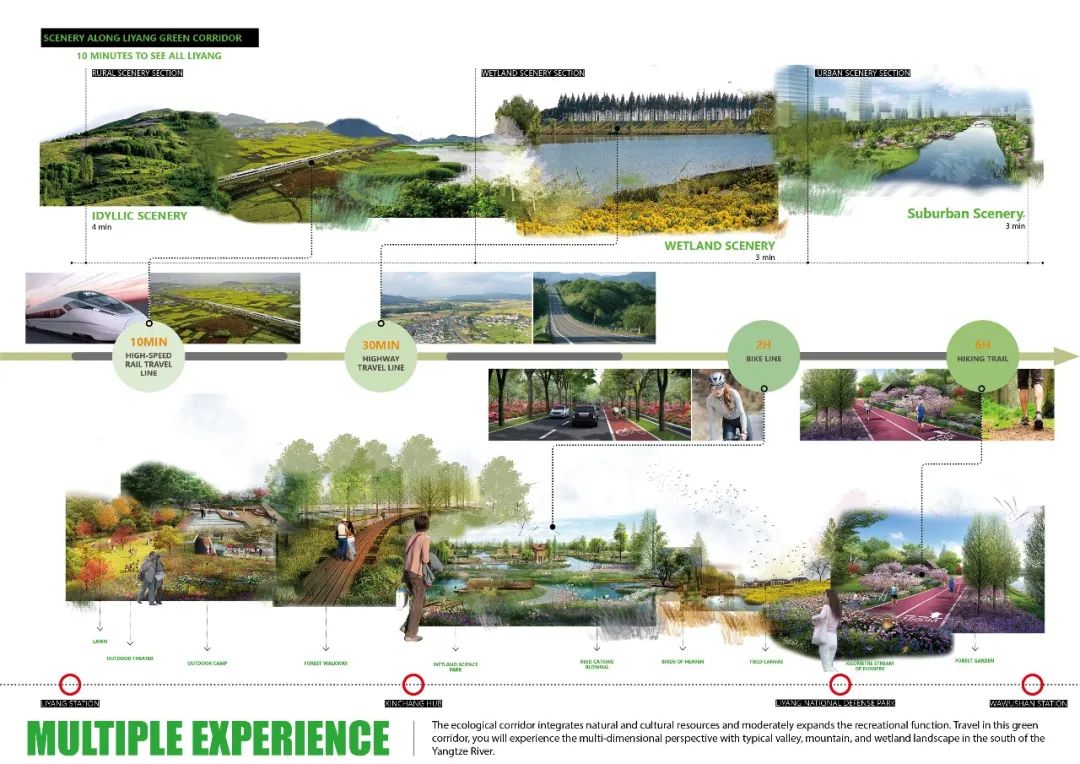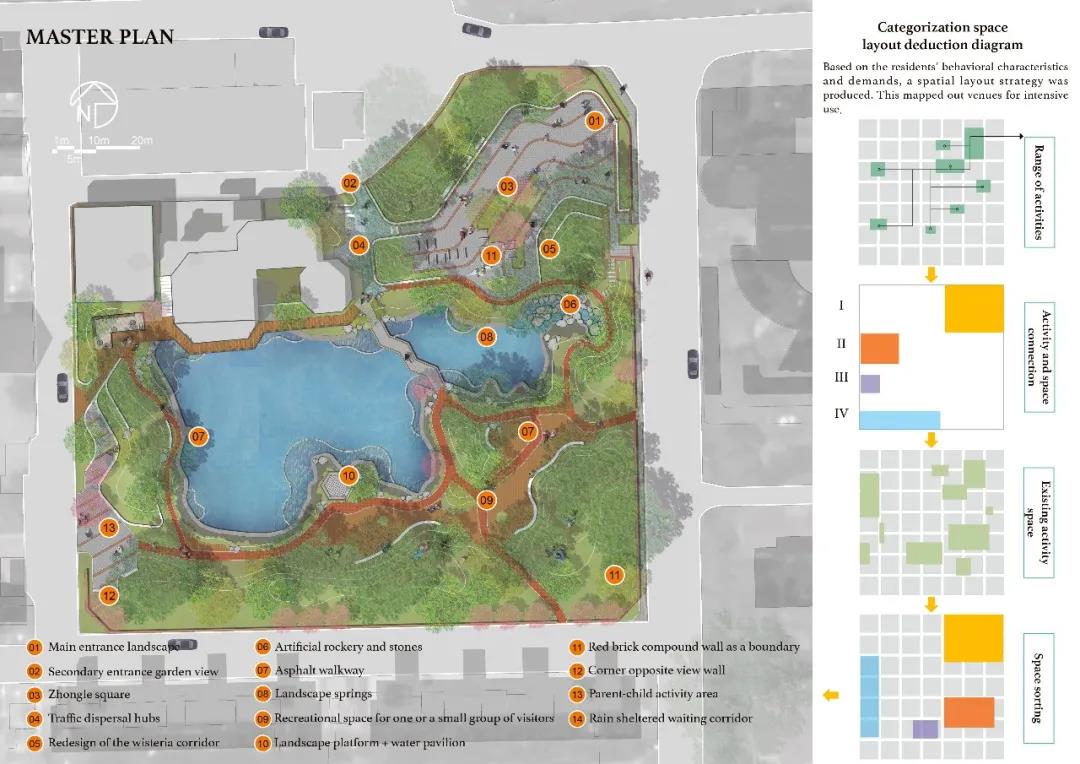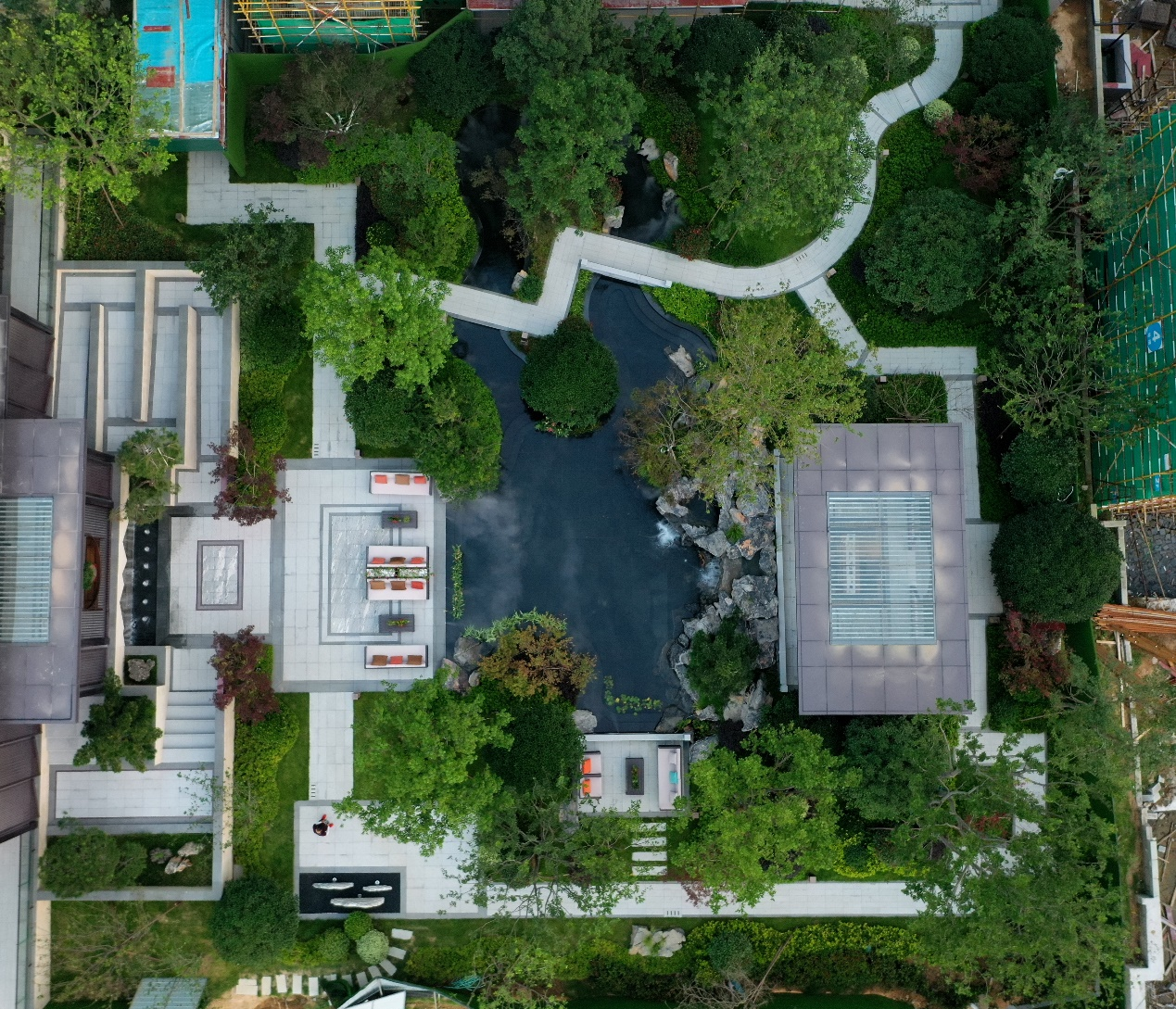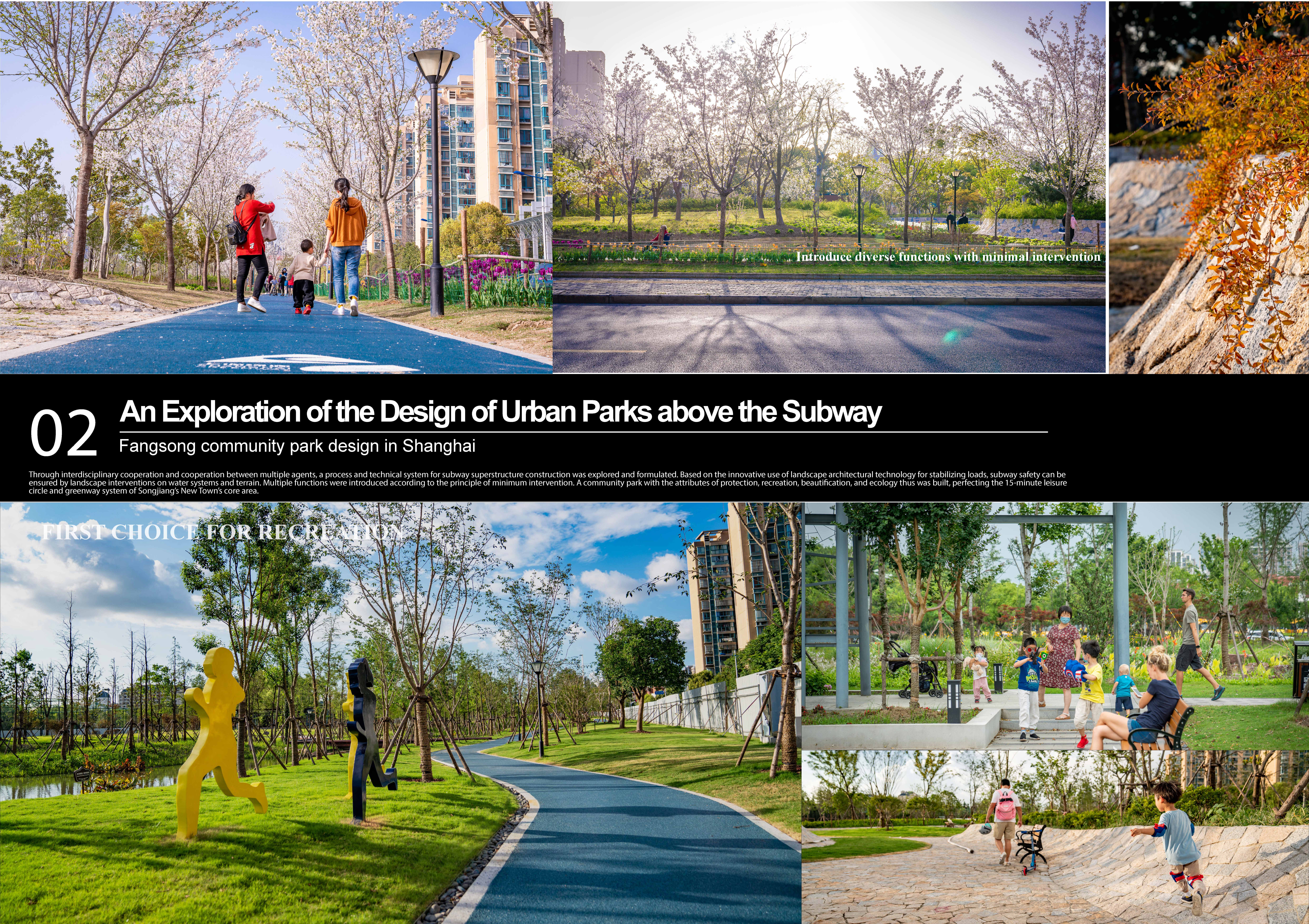Recently, the International Federation of Landscape Architects (IFLA) announced the list of awardees for the 2021 International Federation of Landscape Architects (IFLA ASIA-PAC) awards (LA AWARDS). Faculty-student collaborative design teams led by Wang Yun, Tang Xiaomin, Zhu Liqing, Zhang Yang, Chen Dan and other teachers from the Landscape Architecture Department of Shanghai Jiaotong School of Design and related design firms once again won 4 awards: Including three Excellence Awards and one Honor Award. At the same time, they secured one 2021 BALI National Landscape Award.
【IFLA ASIA-PAC Landscape Award】
Award of Excellence
1. Sports and Recreational Network
Exploration of the compound utilization mode of China's highway and railway parallel traffic green corridors-Liyang Ecological Forest Corridor Planning
Project team: Wang Yun, Tang Xiaomin, Chen Dan, Zhang Yang, Hu Mou, Huang Jishu, etc.
Cooperative design firm: Shanghai Yijing Architectural Landscape Co., Ltd.


A recent trend in high-speed transportation in China is the development of parallel highway-railway systems. Designing multi-use transportation corridors that efficiently use resources is an issue that designers must resolve. Designers are tasked with the critical need to develop high-speed transportation systems while working with a constant shortage of land for transportation systems. The Nanjing-Hangzhou high-speed Railway and Highway is part of the Liyang Ecological Forest Corridor, a green traffic corridor that traverses the Liyang city area. In the context of resilient landscape restoration and territorial master planning, multi-dimensional analysis and overall planning are carried out to explore innovative strategies for green corridor master planning and comprehensive utilization of the rapid development of high-speed transportation facilities in China. By restoring damaged natural habitats, the green space network can be rebuilt systematically and play a significant role in linking together other areas. At the same time, this corridor would integrate the natural and cultural resources of the land and surrounding areas, creating a green esplanade to accelerate the interaction and co-prosperity between urban and rural areas and revitalize the local culture and economy.
2.Communities
The memory garden of three generations-the renewal design of Shanghai Songjiang "Renle" community park
Project team: Tang Xiaomin, Wang Yun, Zhang Yang, Zheng Ruya, Zhao Weiqi, etc.
Cooperative design firm: Shanghai Yijing Architectural Landscape Co., Ltd.


In old communities where space is scarce, the renewal of community parks requires overcoming various challenges, including those concerning spatial design and management systems. The search for an effective pathway for resolving such predicaments in the way of old community park renewal is the greatest challenge facing the modernization of urban community governance in China. “Renle” Community Park is located in the Renle Community Center, the most aged area. Its area is 5,000㎡, serving as the only green space within the community. The park holds the lifetime memories of three generations. However, it lacks a diversity of functions, and presents a mismatch between supply and demand. The foundation of this project rests on “thick data,” derived from the behavior and demands of community residents. Based on the analysis of statistical models, Renle Park is renewed, becoming a complex variable space through spatial segmentation and staggered usage. This produces a rich and vibrant “public living room” for the community. At the same time, the project explores the formation of a governmental model for the co-construction, co-governance, and sharing of community public space. It has become the primary symbol and guide for the “Songjiang Kids” special operation for green activation.
3.Built Projects: Residential
Permanent glory and poetic dwelling——Oriental aesthetics in the landscape of the residential area of Haiqu Mansion
Project team: Zhu Liqing, Zhang Yang, etc.
Cooperative design firm: Shanghai Weimei Landscape Design Engineering Co., Ltd.


The design is based on the interpretation of traditional garden art, and the strong plot of "home" in the residential area of Haiqu Mansion is created by diverse and pleasant living spaces created by elements such as mountains, water, plants, and buildings. The spatial layout of the works starts from the relationship between man and nature and people’s perception of space. It is modeled on the Lingering Garden, one of the four traditional famous gardens in the south of the Yangtze River in China. Design techniques of courtyard space. The layout of the entrance is axis-symmetrical and the sequence is strict. The continuity of opening and closing spaces is used to create courtyards, quiet streets, deep lanes, flowers, and more, reflecting the spatial environment of traditional Chinese "home" memories. The work comprehensively uses design techniques such as framed, opposing, porous, clipped, connected, and barrier scenes to achieve the spatial effect of changing scenery, creating a heavy mountains and rivers without doubt, and a village with bright willows and dark flowers. Thus the project is able to enrich the spatial experience and interpret the progressive aesthetics of the East. The designer explores the culture, connotation, and function of traditional and modern human settlements, and realizes the interpretation of the ideal home in modern human settlements. This interpretation satisfies the aesthetic needs of modern people without sacrificing the essence of traditional culture.
Honourable Mention
1.Parks and Open Space
Exploration of the design of urban parks on the subway-the Shanghai Fangsong Community Park Design
Project team: Wang Yun, Tang Xiaomin, Chen Dan, Zhang Zelin, etc.
Cooperative design unit: Shanghai Yijing Architectural Landscape Co., Ltd.


In the process of rapid urbanization, the gap between the supply and demand of urban public space has become more and more pronounced. In the context of urban renewal, the multi-functional utilization of green traffic corridors above subways is an important way to solve this problem.
This project is located in the core area of Songjiang New Town, Shanghai. It consists of an artificial forest belt over Subway Line 9. Through interdisciplinary cooperation and cooperation between multiple agents, a process and technical system for subway superstructure construction was explored and formulated. Based on the innovative use of landscape architectural technology for stabilizing loads, subway safety can be ensured by landscape interventions on water systems and terrain. Multiple functions were introduced according to the principle of minimum intervention. A community park with the attributes of protection, recreation, beautification, and ecology thus was built, perfecting the 15-minute leisure circle and greenway system of Songjiang’s New Town’s core area.
【BALI British National Landscape Award】
Follow the light that will always shine on life-the modern translation of regional sun worship and traditional oriental courtyards
Project team: Zhu Liqing and others
Cooperative design unit: Shanghai Weimei Landscape Design Engineering Co., Ltd.


The project is in Rizhao City, Shandong Province, China, in the core sector of the future new city development. The designer interprets the cultural connotations of the sunrise in Rizhao city, allowing it to echo in the design concept, positioning it as a modern translation of Chinese traditional garden courtyards and a design work that reflects the oriental sun totem culture. The work is thus inspired by the natural landscape culture, regional solar culture and spatial layout, landscape elements, and planting in traditional gardens. In this landscape work, the sun round gate and mountain form reflect the beauty of the sunrise. The people of Rizhao are industrious and stress that on days when the sun is shining one must not waste a good opportunity. People rely not only on the sun in the sky, but also on the sun in their hearts-life is a pure flame, and we live by the unseen sun in our hearts.